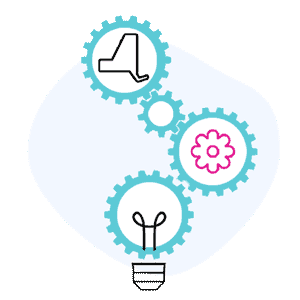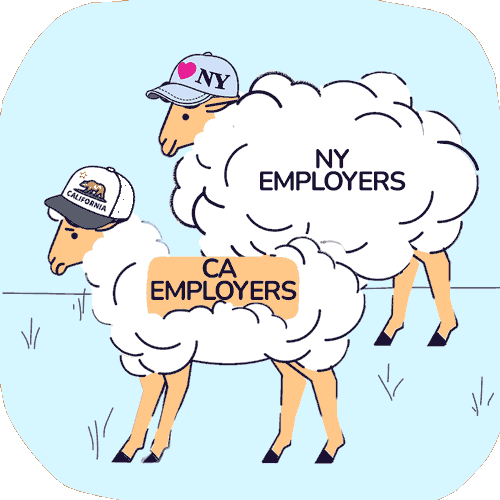New York: How to Guarantee e-Bills Reach Payers

For New York State providers, electronic billing is the best way to make treating injured workers financially sustainable. But to e-bill successfully requires the provider’s e-billing software to get one crucial thing right: consistently delivering e-bills to the payer’s correct electronic “address.”
In e-billing terms, the payer’s electronic address comprises both:
- The specific clearinghouse hired by the payer, and
- The unique Payer ID number assigned to the payer by that clearinghouse
Unfortunately, rampant misinformation convinces providers that submitting e-bills to a single clearinghouse will work. Clearinghouses, as well as Revenue Cycle Management (RCM) companies designed for group healthcare, may attempt to cobble together a workers’ comp e-bill delivery system. These attempts inevitably deliver many e-bills to the wrong electronic address — with the expectation that the e-bill will miraculously be redirected using the payer’s correct electronic address.
Providers should be very skeptical of claims that all e-bills can be delivered through any single clearinghouse. The fact is that when a provider’s e-bills are sent to a single clearinghouse, many are “lost in the cloud,” or snail-mailed rather than sent electronically.
Read on for a brief overview of how to best ensure workers’ comp e-bill delivery (and fast payment) — and how at one point, even daisyBill fell for the myth of single-clearinghouse e-bill delivery.
Tracking Clearinghouses & Payer IDs: A Full-Time Job
Most workers’ comp payers (also known as claims administrators) lack the technology to compliantly accept and respond to e-bills. Consequently, payers hire clearinghouses to do so on their behalf.
A clearinghouse assigns each of their insurer, self-insured employer, and TPA clients a unique Payer ID number; hence the e-billing “address” for each payer being a combination of the correct clearinghouse + the correct Payer ID. Maintaining this clearinghouse and Payer ID information is the only way to ensure consistent e-bill delivery — and it’s more complicated than it might seem.
Some payers use multiple clearinghouses, depending on the employer or bill review service involved. Some payers have multiple Payer IDs, depending on various factors. For example, TPAs can have individual ‘client-specific Payer IDs’ for each employer client.
Keeping track of these clearinghouse/Payer ID combinations is a full-time job. Fortunately for our providers, it’s our full-time job, and the result is drastically faster payment.
The 8 payers below are some of our largest, collectively processing hundreds of thousands of e-bills for our providers annually. And as our data shows, they do so in 10 days or less on average.
Note that several of these payers use either multiple clearinghouses, multiple Payer IDs, or both.
Payer |
Payer ID Count |
Clearinghouse(s) |
Average Days to Payment |
Sedgwick Claims Management Services |
10 |
Data Dimensions, CorVel |
9 |
Gallagher Bassett |
1 |
Jopari |
7 |
Berkshire Hathaway Homestate Companies |
1 |
Carisk |
9 |
Liberty Mutual Insurance |
1 |
Jopari |
7 |
Broadspire |
5 |
Data Dimensions, Jopari, Carisk, CorVel |
8 |
Zurich Insurance North America |
1 |
Jopari |
10 |
CorVel |
447 |
CorVel |
7 |
Adminsure |
6 |
Data Dimensions |
6 |
e-Billing Myths (and Solutions)
Reportedly, some RCM software companies and clearinghouses are making false promises, assuring providers that e-bills sent via the wrong clearinghouse or Payer ID are easily rerouted to the correct place. These assurances are patently false.
Think of an e-bill’s journey like an airline flight. Most people prefer direct flights, because the odds of you or your luggage not making it to the destination increase drastically with each connection. The same goes for e-billing: rerouting is an invitation for complications.
Even daisyBill learned this lesson the hard way.
10 years ago, our fledgling company was told (and we admittedly believed) that submitting all e-bills through one clearinghouse would work. As the lost (and mailed) bills piled up, we were forced to pivot, quickly establish direct connections with all active clearinghouses, and build a back-end database of clearinghouses and Payer IDs to ensure that every e-bill gets where it’s going.
daisyBill still maintains this database, which includes every e-billing address for every payer, including when the payer has multiple Payer IDs. This way, the provider simply enters the billing information, and daisyBill securely transmits the e-bill to the correct destination (and to the Workers’ Compensation Board, as required by New York State regulations).
Too often, providers take a financial loss by treating injured workers; admirably, many continue to do so regardless of unpaid bills. It doesn’t have to be that way. Solid e-billing software increases the speed and accuracy of payment — but it’s crucial to choose software that’s up for the job.
Protect your practice revenue. Harness the power of daisyBill software, data, and expertise for faster, better workers’ comp billing.
CONTACT US
DaisyBill provides content as an insightful service to its readers and clients. It does not offer legal advice and cannot guarantee the accuracy or suitability of its content for a particular purpose.





.png)